Udenrigsudvalget 2013-14
URU Alm.del Bilag 174
Offentligt









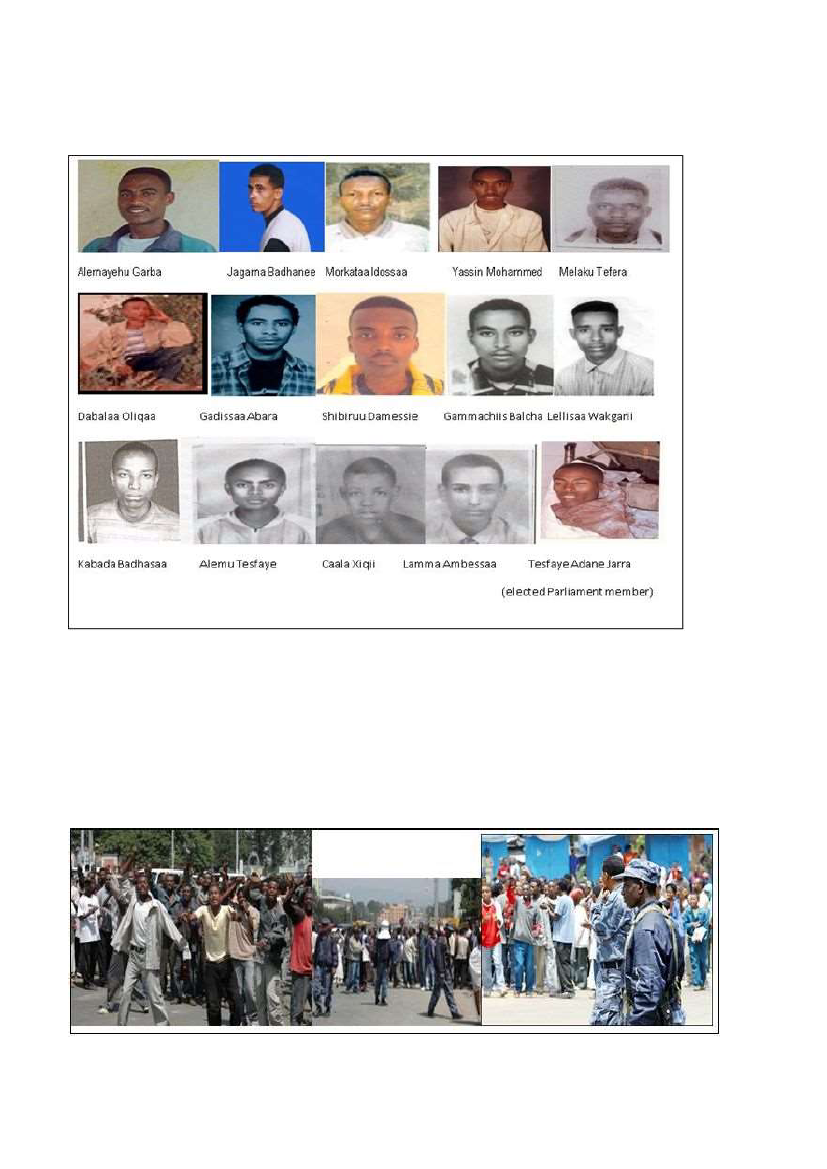
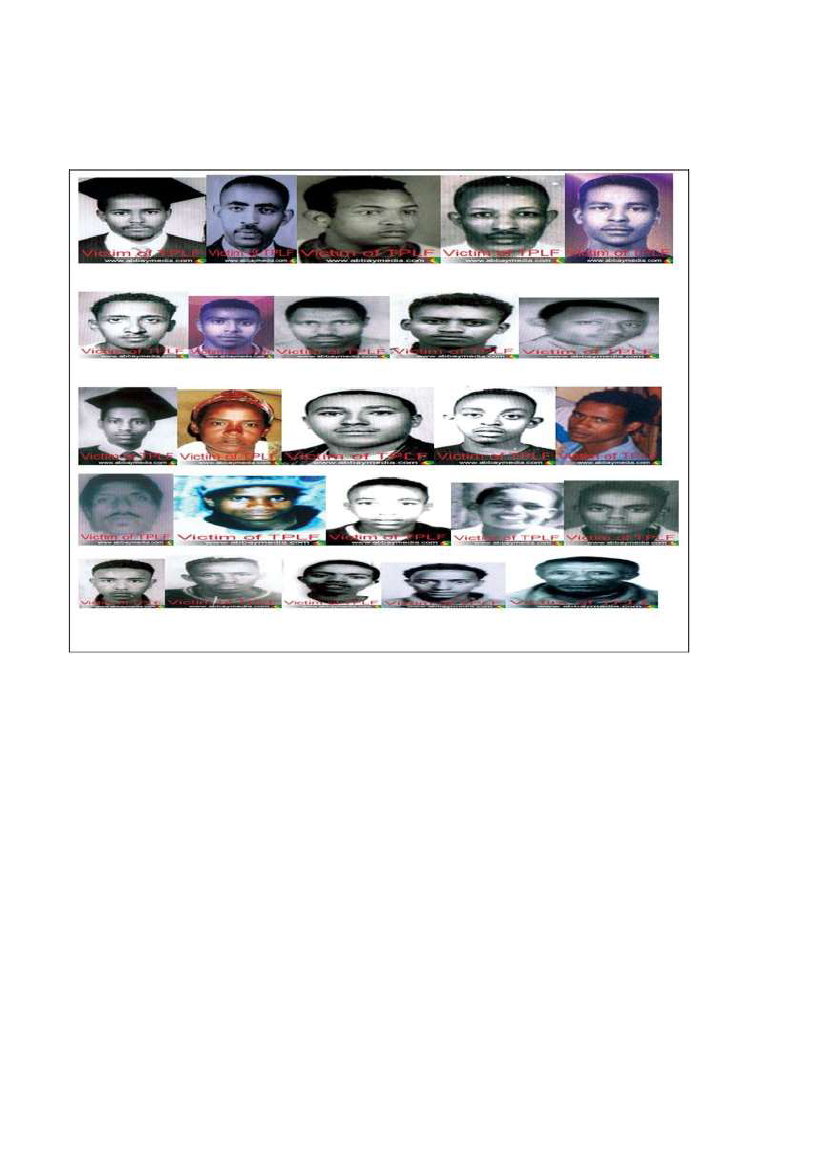
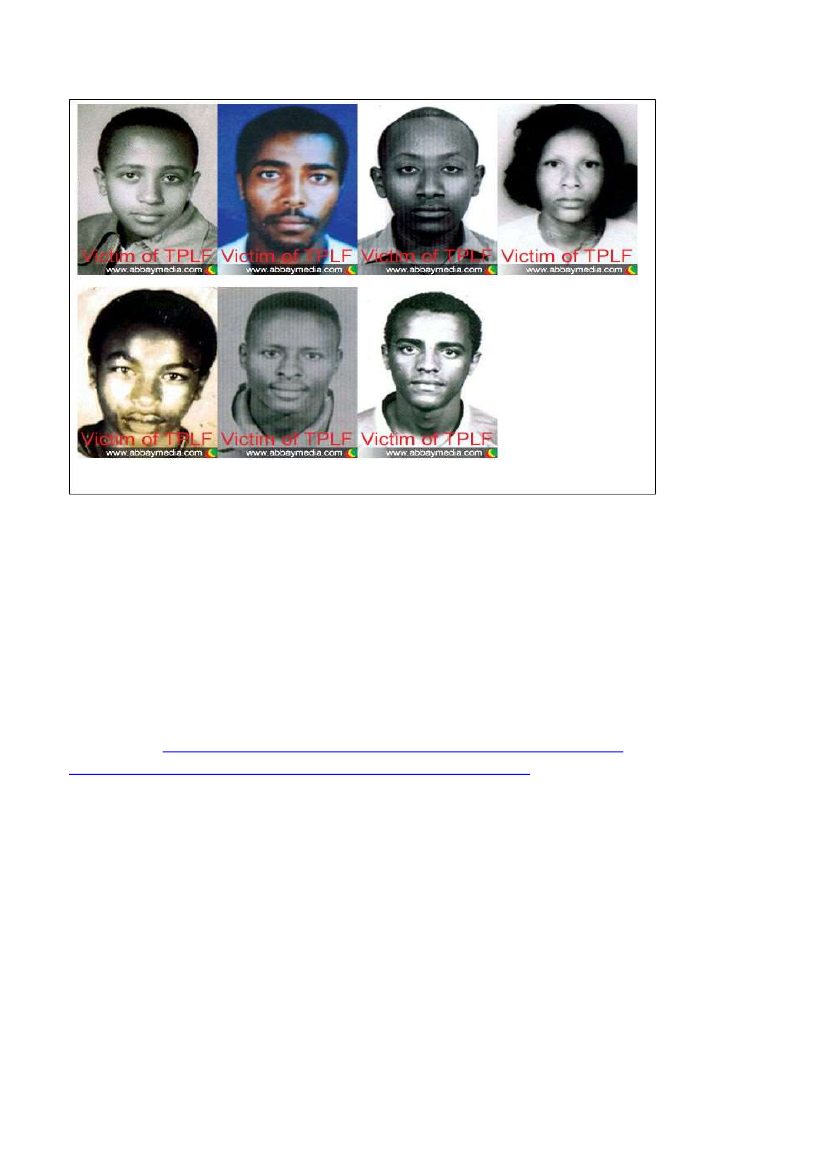



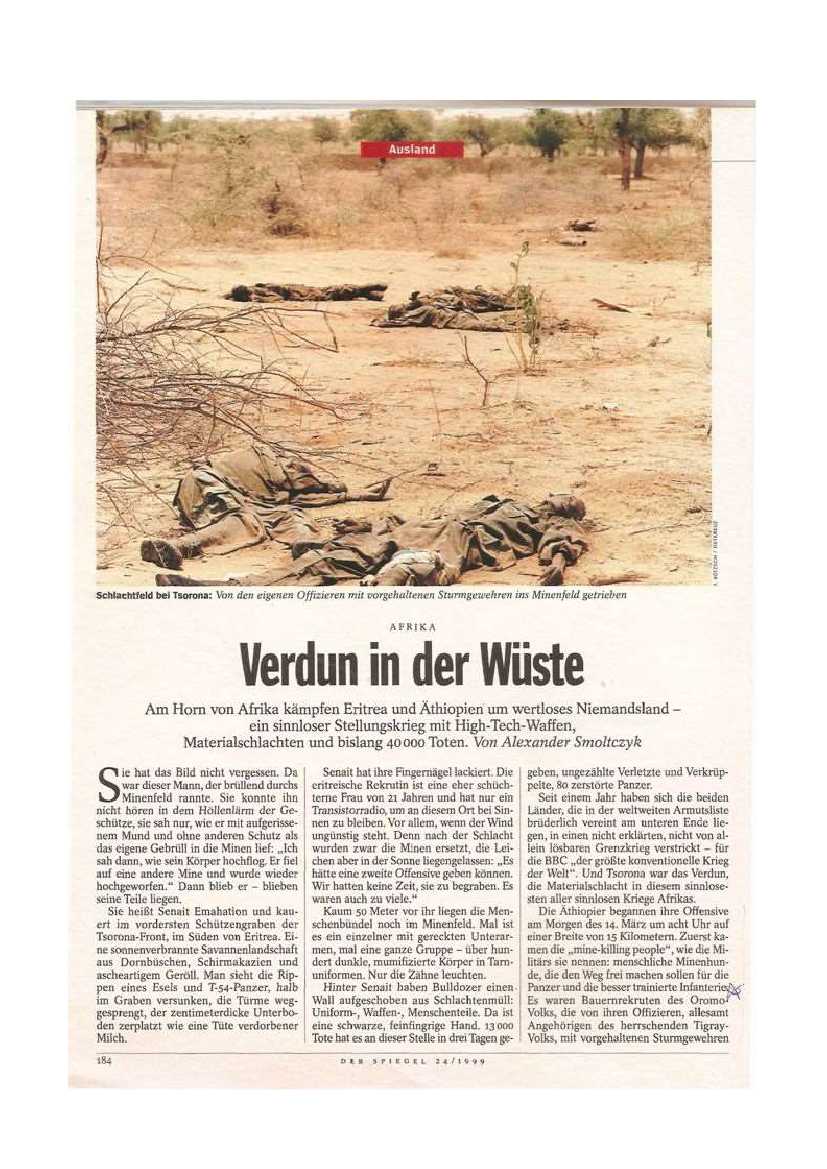

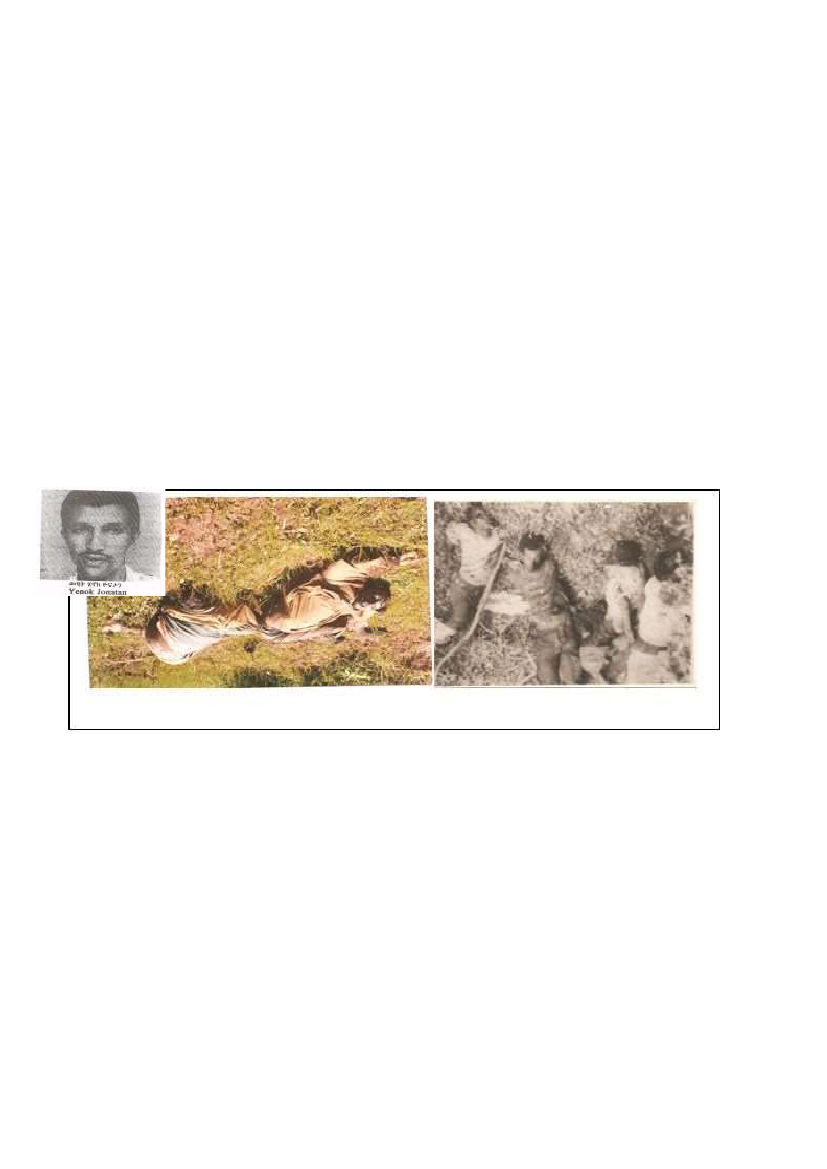



Partial list of Mass execution of Oromos and other nation and nationalities ofEthiopia (Documented by Oromo Liberation Front Information and Research Unit, March 2014)Injustice anywhere is injustice everywhere!!!Ethiopia is one of the Countries at Genocide Risk in accordance withGenocide Watch’s Report released on March 12, 2013.•Genocide Watch considers Ethiopia to have already reached Stage 7,genocidal massacres, against many of its peoples, including the Anuak,Ogadeni, Oromo and Omo tribes.•We recommend that the United States government immediately cease allmilitary assistance to the Ethiopian Peoples Defense Forces. We alsorecommend strong diplomatic protests to the Meles Zenawi regime againstmassive violations of human rights in EthiopiaArticle 281 of the Ethiopian Penal Code : Genocide; Crimes against HumanityWhosoever, with intent to destroy, in whole or in part, a national, ethnic, racial, religious orpolitical group, organizes, orders or engages in, be it in time of war or in time of peace:(a) killings, bodily harm or serious injury to the physical or mental health of members of thegroup, in any way whatsoever; or(b) measures to prevent the propagation or continued survival of its members or their progeny; or(c) the compulsory movement or dispersion of peoples or children, or their placing under livingconditions calculated to result in their death or disappearance, is punishable with rigorousimprisonment from five years to life, or, in cases of exceptional gravity, with death.Art. 282. War crimes against the civilian populationWhosoever, in time of war, armed conflict of occupation, organizes, orders or engages in , againstthe civilian population and in violation of the rules of public international law and ofinternational humanitarian conventions:(a) killings, torture or inhuman treatment, including biological experiments, or any other actsinvolving dire suffering or bodily harm, or injury to mental or physical health; or(b) wilful reduction to starvation, destitution or general ruination through the depreciation,counterfeiting or systematic debasement of the currency; or
1
(c) the compulsory movement or dispersion of the population, its systematic deportation, transferor detention in concentration camps or forced labour camps; or(d) forcible enlistment in the enemy's armed forces, intelligence services, or administration; or(e) denationalization or forcible religious conversion; or(f) compulsion to acts of prostitution, debauchery or rape; or(g) measures of intimidation or terror, the taking of hostages or the imposition of collectivepunishments or reprisals; or(h) the confiscation of estates, the destruction or appropriation of property, the imposition ofunlawful or arbitrary taxes or levies, or of taxes or levies disproportionate to the requirements ofstrict military necessity, is punishable with rigorous imprisonment from five years to life, or, incases of exceptional gravity, with death.Art. 284. War crimes against prisoners and interned personsWhosoever, in the circumstances defined above:(a) organizes, orders or engages in killings, acts of torture or inhuman treatment or acts entailingdire suffering or injury to prisoners of war or interned persons; or(b) compels such persons to enlist in the enemy's armed forces or intelligence or administrativeservices, is punishable in accordance with Art. 282Art. 28. Crimes Against Humanity1. Criminal liability of persons who commit crimes against humanity, so defined by internationalagreements ratified by Ethiopia and by other laws of Ethiopia, such as genocide, summaryexecutions, forcible disappearances or torture shall not be barred by statute of limitation. Suchoffences may not be commuted by amnesty or pardon of the legislature or any other state organ.Source: PENAL CODE OF THE EMPIRE OF ETHIOPIA OF 1957, Proclamation No. 158 of 1957,Negarit Gazeta, Extraordinary Issue No. 1 of 1957, 23 July 1957. Came into force: 5 May 1958.Constitution of the Federal Democratic Republic of Ethiopia Adopted: 8 Dec 1994Ethiopia took part in the negotiation of the Genocide Convention in 1948, signed the Conventionon the day it become open for signature and was the first nation to ratify the Convention on July1, 1949.
2
All Mass murder outlined below were committed intentionally and indiscriminately byEthiopian government agents such as armed force of the Ethiopian Defence Force,Police and security agents. Most of them committed by shooting of unarmed protestors,lobbing grenades into prison cells, and randomly executing civilians. This mass killingsmainly targeted at oromos with an attempts to exterminate the entire group. Some ofthese mass murders have been found to be genocides and others to be crimes againsthumanity, mass murder committed with descending time is out lined below:-
16. The Massacre by Liyu Police 2013/2014 on Ogadeni and OromosEthiopian paramilitary Force or Liyu Police militia better known as “Ethiopia’s Janjaweed” is killing, raping, torturing, and arresting unarmed civilians in Ogaden and OromiaRegion. The Militia’s human rights violations are well-documented by the Rights Groups-such as Human Rights Watch, Amnesty International and Genocide Watch. It has beennoted that the Liyu Police, security forces in the Somali Region entered the Oromiyaregion, expelling the local Oromiya regional administration in the town of Mino andraising the flag of the Somali regional state. Since entering the town of Mino in Januaryof 2013 (and prior to that) their harassment, looting sprees and killings perpetratedagainst of the Oromo inhabitants of Mayyu, Mulluqe county have been reported bynumerous sources in the county. It was also reported the Federal Police did not receiveany response from the Federal government. Federal Police in the vicinity of Mayyucounty made no effort to resolve the issue or protect the civilians from the harassmentand killings carried out by the Liyu Police. On the contrary, sources in the region saythat up to 37 civilians, including women and elders have been reportedly killed by themilitia. Up to 20 000 inhabitants have fled into neighbouring counties such as Burqa.The Guardian reported that this criminal institution to receive £19 million from UK’sdepartment for International Development or (DFID), a report denied by the DFID.Human rights Watch about the Liyu police in the following manner:-Lynne Featherstone (Letters, 15 January) gives the impression that Human Rights Watchsupports DFID's proposed training programme for the Liyu police. We do not. For years we havedocumented egregious human rights abuses committed by the Liyu police, including the March2012 extra-judicial execution of 10 men in their custody and the killing of nine other villagers. Toour knowledge, the Liyu police are a paramilitary group without a clear legal status. For thesereasons, Human Rights Watch does not believe that a donor-financed training programme isappropriate, certainly not without clear commitments by the Ethiopian government to conductcredible investigations into past and ongoing abuses, and action to hold accountable thoseresponsible.David MephamUK director,Human Rights Watch(TheGuardian, Tuesday 15January 2013 21.00 GMT)3
15. The Massacre of Muslim protestors April and August 2013 in Asasa and KofeleOromiaOn 27 April 2013, at least four people were killed and eight others wounded by securityforces during demonstrations in Asasa town, Oromia region. The conflict erupted aftersecurity forces, attempted to detain Sheik Su'udi Aman, directly following a sermon inwhich he criticized government policy. On the same day at least 200 residents of Asasatown were arrested by the security force in response to the protest. Moreover, on 2August 2013, in the town of Kofele in Oromia, security forces again opened fire onpeaceful Muslim protestors killing at least26.(Extracted from the report ofCIVICUS: WorldAlliance for Citizen Participation report 19th Session of the UPR Working Group Submitted 16September 2013)
Generally it is said that the religious freedoms provided in the country’s constitution of1995Article 11/3 which states “ The state shall not interfere in religious matters and religion shallnot interfere in state affairs”. And the International Covenant on Civil and Political Rights,Article 18/1,2 which states (“ 1. Everyone shall have the right to freedom of thought, conscienceand religion. This right shall include freedom to have or to adopt a religion or belief of his choice,and freedom, either individually or in community with others and in public or private, to manifesthis religion or belief in worship, observance, practice and teaching. No one shall be subject tocoercion which would impair his freedom to have or to adopt a religion or belief of his choice”).
Which Ethiopia is signatory since 1993
14. The massacre of members of the Suri tribe took place in December 2012A heavily armed national army was sent to the area to silence the Suri people’s protestagainst evictions and displacements from their ancestral land, properties, and all formsof livelihoods against their will and out of their consent. According to the report obtainedfrom a Human Rights researcher called Doglas Burji , 147 Suris were killed in a one timeattack by the national army at an area called Beyahola in Suri village; and their deadbodies were buried in a mass grave deep in the Dibdib forest not far from thevillage.(extracted from HRLHA Statement Feb.2013)
4
Photo by Douglas Burji, The Army surrounded the Suri women, 28 December 2012
13. The Mass murder of 42 Ogaden Traditional community leaders in Year 2009In 2009 the government security force killed 42 traditional community leaders inKabiribayah in Ogaden.
12. The Mass Murder in Bossaso (Puntland, Somalia) 5th of February, 200865 Oromo refugees from Ethiopia were killed and more than 100 others were seriouslyinjured when two grenades were thrown at two different hotels owned by two Oromorefugees, Melaku and Jamal Arsii, in port town of Bossaso in Puntland, Somalia. Thevictims were watching a video game produced in Oromo Language by the time the attacktook place on the 5th of February, 2008.(HRLHA Press Release No.9 February 2008)According to HRLHA informants in the area, the deadly attack was planned and executedjointly by security forces form Ethiopia and Puntland. A three-member mercenary grouporganized in Ethiopia was sent out to neighbouring countries were refugees fromEthiopia are believed to have been staying to take such actions against suspectedmembers of opposition political organizations. Relatives and family members of thevictims in particular give the following proofs to substantiate their claims:1. One day prior to the attack in Bossaso, houses of Oromo refugees living in Boramaand Buro towns of Puntland were searched by the joint Ethio-Puntland security agents.2. 30 seconds before the happening of the attack, the power was turned off from itssource and the whole town remained in absolute darkness; domestic and internationaltelephone networks were disconnected.3. The town of Bossaso was fully surrounded by heavily armed security forces and allroads leading into and out of the town were blocked.4. After the attack took place, the bodies of the victims were immediately loaded onto twotrucks and taken to unknown places.5. The vehicle of the Ministry of Interior of Puntland was identified at the place of theattack.Nr. Name1Abama Nyalata AbitGender Age Place of BirthM5
23456789101112131415161718192021222324252627
Abdallaa Ahmed MaluAbdala Kamal TuseAbdiugafar Abdulahi JabranAbdiltif Shubbe MohamedAbdo kalifaAbdujabar Mohamed AbdoAbdul Fatah AbubakarAbdulle Biluu AhmedAbdulmajid Abiti MohamedAbdusalam MustaffaAbrahim Siraj AbrahimAlamu BayanaAhmed Bakar BirkaAhmed Mahamud KalilAli Mohamed BashirAliyyii Ahmed MusaAliyyi Mohamed AliyyiAmin Hussen AbdulqadirArabu Hussen AbdurahmanDaud Kadir HussenFadluu Haji AbdooGidana Muse DadeHassan Umar DuqaaHusseen Jara SulteJamal Mohamed SaaliJamal Mohamed Ulula
MMMMMMMMMMMMMMMMMMMMMMMMMM5320202020241819222828201842
Sambate/WalloSude/ArsiWakkite Burka/ShwaBale
Jaju/ArsiArsiShirka/ArsiJaju/ArsiBaroda/HrargeRobe/Arsi
Wallo
Wallo
Jaju/ArsiArsi
Wall
6
2829303132333435363738394041424344454647484950515253
Mohamed AlooMohamed Amin KadirMohamed Amade UlumeMohamed Bile Ahmed YusufMohamed DhereMohamed Gazali Sh. AmanMohamed Usmael KasimMohamed Usmael AliyuMohamed Yasin IbroMuhaddin Kamal AmanMustafa Salii AbdallaMustafa Salii AbdallaNagahu Abdi AliNagash Mohamed IdrisNagawo Abdoo AlliyyiNura Abdurahman ShekaObsaa Aman SheekoQasim KadirRedwan KadirSuleyman Ahmed
MMMMMMMMMMMMMMMMMMMM2223Lole/ArsiJaju/Arsi232338Baddanno/HarargeBaddanno/HarargeRobe?Arsi1820Machara/HarargeWallo22Robe/Bale
Sulayman Ma’alim Warsame MTure Aman AbdoUmar Aadam Umar rayaUmar Ahmed Tarafa,Umar Mahamud UmareUmar TakaMMMMM723walloWallo
54555657
Usmael Hasso Sh AadamWandwoson BaqalaaXahir Hussen AbdilkariimZiyaad Ibrahim Hassan
MMMM2530
Machitu/Arsi
BaleGalamso/Hararge
The names of more than 40 victims who are in critical condition were not included
11. The Massacre of Oromos Gara Sufi in February 2007Gaara [Mount] Suufii is located about two hours walk on foot from Mi’essoo, to the North-East of Asaboot, in Eastern Oromia. The heart wrenching account of the Gaara Suufiigruesome and politically motivated murders of Oromo political prisoners was brought tothe day light by theVOA Afaan Oromo program on Wednesday Feb. 21, 2007.The victimsrange from a fourteen years old teenager, Ayishaa Alii, to a seventy year old elderly farmerObbo Ahmed Mohhamed Kuree. List of summarily ecxuted oromos at Gara Sufi (chinacamp) is shown in the table below.No.12345678910111213141516171819NAMEAbdalla Mohammed BoruuAdam Yusuf AmeAdnan MuhammedAhmed AbdulhakimAhmed AbdurhamanAhmed Abrahim BoruAhmed AliyyiiAhmed EliyasAhmed IbrahimAhmed KoreaAhmed MohammedAhmed Muhamed KureAhmed ShenkorAyisha Aliyi MuhammedIbrahim BadhaasooMohammed Aliyii TureMohammed Eliyas GutoMohammed SanyiiYusuf ObroGenderMMMMMMMMMMMMMMMMMMMAGE2535223237301415701814302834REGIONFayyooMiessooGalamsoMiessoAssebotMiessoDobaMiessoMiessoDobaGuba qorichaMiessoKolloMiessoHabroChiroMiessoDobaAssebotsource
8
Source:VOA Afaan Oromo program on Wednesday Feb. 21, 2007, pictures from Local people
Some of Oromo youths that have been killed during peacful demonstrations:- 1) againstsystematic educational and economic discrimination of the Oromo people, 2) againstgovernment’s failure to extinguish forest fire which consumed Ethiopia’s less than 3%tropical rainforest mostly located in the Oromia region in 2000, 3) against the use ofderogatory words that humiliate the Oromo students in the university campuses by TPLFagents,4)for greater academic freedom in the country, 5) to urge the federal Governmentto reverse its decision to transfer the capital of Oromiya from Addis Ababa to Adama(formerly known as Nazret) and 6) for their quest of the right of selfdetermination ofOromo people since 2005 as fundamental human rights and etc.
9
10. The Massacare after Turmoil of 2005 National election, Addis Ababa193 unarmed demonstrators massacred by Meles Zenawi's Aagazi sharp shooters inJune and November 2005. Troops were ordered by Zenawi to shoot to kill. Most diedfrom bullet wounds in the forehead. Massacre occured in June and November whenprotesters demonstrated in support of the oppositions accusing the Prime Minister ofrigging the polls in May. Authorities have closed most private newspapers, jailed localjournalists, detained political leaders and family members of journalists.
10
Below are a few pictures of the 2005 post election victims of TPLF’s massacres;
11
Note:These pictures are only those that we could find their picture of, there are many hundreds more victims ofTPLF’s atrocities in Ethiopia. All pictures are after www.abbaymedia.com
9. The massacre of Anuak on 13 December 2003The December 13/2003 mass killings of Anuaks by Ethiopian Defence Force andgovernment sponsored high landers that left more than 424 educated male civilianAnuaks; wounded more than a thousand and forced many more to seek asylum," said agroup of Anuak community leaders, in a recent appeal to World Bank President JimYong Kim. (http://www.hrw.org/reports/2005/ethiopia0305/4.htm)http://www.youtube.com/watch?v=uaZty97JXzU&hd=1www.genocidewatch.org orwww.survivorsrightsinternational.org
8. The Locke, Sidama, Massacre 24 May 2002On May 24, 2002 soldiers from Ethiopian defence forces opened fire on unarmed andpeaceful civilian demonstrators in Locke, Awassa, Sidama, killing 46 and wounding 44others. The march was called to protest the undue interference of the TPLF/EPRDF inthe administration of the city of their own and quest for the denied regional statehood asper proclamation no.7/84. However, the response for this legitimate quest was brute,12
excessive and savage killings. In the aftermath of the May 24 incident, 1,300 people wereimprisoned and tortured for alleged participation in the march. Due to intenseinternational outcry reverberated around the world; most of the prisoners were releasedon bail, with a possible detention in the future.All local and international human rights groups have campaigned assiduously since May24, 2002 for full independent, judicial public inquiry into the killings and bring thoseresponsible to justice. All peace loving members of the international community, humanright institutions and Ethiopians in all walks of life to compel the despotic Ethiopianregime to commence a public inquiry into the killings of innocent civilians and bring allresponsible to justice.
Nr.
NAME
GenderMMMMMMMMMM
Age
Occupation
Area
Source
12345678910
Abraham BekeleAbraham KiyesaAnisa Kiyesa BarasaAyele ChekamoAtote Aleto WalisoBelay GutaBelay Paulos DiyamoBekele Harso KawisBuna BulenoBunara Ganama
-1515164513.-2215
Farmerstudent7thgradestudentFarmerstudentFarmerFarmerBusinessmanStudent
Bushulo, AwassaAlamura, AwassaNuro Dulcha,Shabdino AwassaAwassaTula, AwassaAlamura, AwassaAlawarka, BorchaAlawarka, BorchaShabadino/Abila Lida, AwassaAlwarka, Shabadino/AbilaLida, AwassaNuro Dulacha, AwassaAlamura, AwassaTula 01, AwassaShabadino/Korke Meskel,AwassaAlamura, Awassa
OSG No.38OSG No.38OSG No.38OSG No.38OSG No.38OSG No.38OSG No.38OSG No.38OSG No.38OSG No.38
11121314
Buzuneh Lankamo DumeDaniel Ibsa KanasaElias TekameHamisa Kiyessa
MMMM
-15-16
BusinessmanstudentFarmerStudent
OSG No.38OSG No.38OSG No.38OSG No.38
15
Haniso Bekele
M
-
Farmer
OSG No.38
13
16
Irjato Gidessa Shabbee
M
20
student
Marancha,Shabadino/GonawaAwassaMarancha, Shabadino/Abila.AwassaAlwarka, Shabadino/Chefa,AwassaAlamura/Finchawa, AwassaaNuro Dalacha, Awassa
OSG No.38
17
Kadir Abdulqadir
M
25
student
OSG No.38
18
Kefyalew Doyamo
M
15
student
OSG No.38
1920
Labalo DukamoMachal Wayessaa Rekiba
MM
25-
studentStudent
OSG No.38OSG No.38
212223242526272829
Marafu MengeshaMarkos MengeshaMato Mekuria sasufaMatiyos ErgamoMisiru BeyeneNausha Rabsa GachanoRekisa BoshalaSatto Shakicha MatichaSeyed Tungamo Tura
MMMMMMMMM
-16.
FramerBusinessmanFarmerFarmer-
Tula 01, AwassaChefa Sine, AwassaaTula 01, AwassaAlamura, AwassaAlamura, AwassaAlamura, AwassaShabadino/Abila Lida, AwassaAgoba/AwassaAlamura
OSG No.38OSG No.38OSG No.38OSG No.38OSG No.38OSG No.38OSG No.38OSG No.38OSG No.38
42303516
BussinesmanFarmerBusinessman10 gradestudent
3031
Shame DebanaSileshi Chakamo
MM158 gradestdentPoliceman4516Policemanstudent
AwsassaTula/Nuro dulacha, Awassa
OSG No.38OSG No.38
323334
Sgt. Surafel MatiyosTadesse KiyaTafesse Yeba
MMM
Alamura, AwassaBansaShabadino/Boneya Meride,AwassaAlwarka, AwassaFinchawa AwassaaNuro Dulacha, Awassa
OSG No.38OSG No.38OSG No.38
353637
Tolemo TomatoYonas ArjamoYosef Didimo Suufa
MMM
161616
studentstudent8th grade14
OSG No.38OSG No.38OSG No.38
3839
Yosef IsayasYosef Seyoum
MM
40
police
AwassaAlamura Awassaa
OSG No.38OSG No.38
7. The Massacare of Sheko and Majenger people on 11 March 2002This occurred during a dispute over the political rights of the minority Sheko andMajenger ethnic groups in the town of Tepi, capital of the Yeki District. Tepi is about 700km south-west of Addis Ababa. Violence erupted on 11 March, 2002. The oppositionSheko-Majenger People's Democratic Unity Organisation (SMPDUO) disputed the resultsof local elections held in December 2001, in which a government-affiliated party wasgiven control over the Yeki District. EU sources say that the head of the local policespoke of 128 fatalities. The opposition claim that between 500 and 1,000 died.The European Union (EU) has demanded a public inquiry into disturbances in SouthernEthiopia earlier this year, which left at least 128 dead (ByNita Bhalla BBC, AddisAbaba, Tuesday, 16 July, 2002, 11:39 GMT 12:39 UK)
6. Using as minesweeper and cannonfodders during the border war with Eritrea1998/1999The Ethiopian government deliberately used the Oromo peasants as cannon fodders andminesweeper just in its most recent unnecessary war with Eritrea (seeDer Spiegel24/1999, p.184 a report from Alexander Smoltczyk indicated below).Various researchstudies and human right watch-dogs have confirmed that the current Ethiopianauthority is purposefully disseminating HIV patients and tactically encouraging thespread this deadly virus among the Oromo youths in Oromia.
15
16
17
5. The Massacare of Babo Gambel village West Wollega on 28 April 199527 people were summarily executed by the EPRDF army in the Babo Gambel village inJarso District at a places called Shimala Ture and Qiltu near Ganda Sheik in westernwollega. The killing took place on three sites, on different dates and nights, the deadbodies were seen by local peoples after they heard six gun firings on the 28th of April1995. The 27 bodies were found two of which are identified. These are Mr. HenockYonatan Yishak 2) Mr. Mesfin Gadafa both were taken on 6 April 1995 from NajoMilitarycamp. The others could not be identified, because they were brought from distantplaces. The local farmers who saw the dead bodies reported to the local administrator inJarso town, who told them not to bury them with proper ceremony. The family of Henokwere refused to bury the dead body of their son (please read witness of an elder man whowas in EPRDF army detention center, with some of these victims). No furtherinvestigation was made by the local administration on these killings
28.4.1995 Babo Gambel W.Wollega, Report and pictures from Sue Pollock 13 April1996 Schottlands National Newspaper PP.10-13
4. The Massacre of Sigmo and Gattira Districts in March 1995In Sigmo and Gattira Districts of Ilu-abba-bor Region, a barbaric campaign ofextermination, round-up, expulsion, and pillaging (by the EPRDF) that began inFebruary and lasted till last week, laid waste nine neighbouring sub-districts (Qebele),and left hundreds of civilian residents dead, while hundreds more are taken prisonersand the rest are made to flee their homes.The localities of the two districts Sigmo and Gattira that were the aims of these heinousatrocities are Suba Kella, Goga, Gata Bodeche, Gata Chaledu, Ijo, Atapara Suba, YadosaBoru, Atharqada Isabo and Atharqada Qurbi. As all able bodied men of these localities18
were either want only murdered, captured or else have fled the area, only the very oldand helpless women are left behind without a productive force. This barbaric, senselessand rampant bloodletting, mass round-up and man hunt undertaken by the army of theTransitional Government for allegation that these localities harbour anti-governmentguerrilla warfare, left not only the families of the dead and the fugitives, but the wholeregion in deep horror and sorrow.Of the many hundreds of victims of this savage butchery, names only a few could beobtained:1.Haji Abba-Saambi,2.Haji Abba-Ali Abba-Digga3.and his son Imam Abba-Ali,4.Rahimo Abba-Mogga,5.Sheh Dalil Sheh Kedir,6.Sheh Sherif Abba-Garo7.and his brother Sheh Mujahid Abba-Garo,8.Abdulqadir Abba- Karru,9.Rayya Musa,10.Sheh Jihad Abba-Garo (the bodies of the last three consumed by wild animals),11. Sherif Abba-Loko,12. Dashu Abba-Garo, U13. sman Abba-Gissa (body consumed by wild animals),all from Sata-Goro locality of Gattira District. A man called Habib, whose second name isnot known and who came on a visit from a neighbouring Chora-Qumbabe locality, alsobecame a victim of the carnage. In addition,1.Mr. Digga Abba-Billo (supporting a family of seven),2.Naji Abdulqadir,3.Nuru Abba-Saambi,4.Zakir Abdulqadir,5.Abba-Fitha Abba-Saambi,6.Oli Abba-Dinka,7.Indris Abba-Dinka,8.Naji Husein and Hawwi Jamal are a few of those massacred in Damu Qufa localityof Gattira District. Similarly, those killed in Salaka locality of Gattira include:1.Haji Abdulkarim Abba-Saambi,2.Abdulkarim Abba-Warri,3.Taju Abba-Bor, Sheh Musa Abba-Simbo;and in Jamiya Locality:1.Abba-Garo Husein,2.Daga Sadacha,3.Nasir Abba-Matcha.In Danne locality,1.the family of Abba-Simel Abba-Qasane, whose number and names are not known,were taken from home and killed by shooting.In Sigmo Qebele 01 of Sigmo District alone,19
1.Haji Rashad Yasin,2.Taddese Ashennafi,3.Gezahegne Gamtessa,4.Jihad Shamsu,5.Abba-Zaban Abba-Dida,6.Hasen Haji Abba-Gissa,7.Haji Dalil Abba-Simbo,8.Awel Abba-Dura, and9. Haji Rasho Abba-Gissa were abducted from their homes two months ago, and no oneknows since whether they are dead or alive. Similarly, Haji Abba-Matcha was taken fromhis home and was executed by shooting in a forest in a far away locality called Tuji onMarch 24, 1995, at about 14:00 local time.
3.The Massacre of Surree and Kiyyoo in Dadar area eastern Oromia On 5
February 19951. Abubakar Haji Muktar2. Abdi Jafar Ibrahim12th grade3. Abdulazizi Abdurhaman204. Adam Abdullah305. Ahmed Abdi196. Ali Adam177. Badru Ahmed148. Fatuma Abdi659. Haji Yusuf Ahmed9010. Hussein Ahmed Abdurhaman11. Ibrahim Adam8012. Iman Abdulahi713. Jafar Damu3514. Jafar Ibrahim OsmanFarmer15. Jafar Ibrahim Utto16. Kadir Ahmed Muhammed Sani10th grade17. Mohamed Adama1518. Mohammed Ahmd2019. Mumadu Ama3220. Mohammed Amin21. Mohammed Habib22. Nura Walambo7023. Yusuf Mohammed1224. Yusuf Ahmed1225. Zaynabs Adam 8 months pergenant 120 people were wounded between January 3and February 15
20
26.27.28.29.30.31.
Omar AbdiJiraataa YuyyaaBakar A,MadobbeeAbdi AbdurahamaSuutee WadayMohammed Jafar
241918273125
from Dibalaa villageGooluuKiyyooYaatuuGooluuGandaa Bareentoo
2. The Wardheer Ogaden Massacre of February 1994The democratically elected Ogaden Assembly held their meeting in February 1994 andvoted overwhelmingly that the Ogaden cannot remain under Ethiopia. The Parliamentreached this decision in accordance with the Ethiopia’s Federal constitution. In Ogaden,this day became known as the “Day of Self-Determination”.In a peaceful demonstration led by the Chairman of the ONLF late Sheikh IbrahimAbdalla, the residents of Wardheer took the streets to support the decision taken by theOgaden Parliament, but the Ethiopian Defence army interrupted that peaceful gatheringand attempted to kill Sheikh Ibrahim. Despite this act was failed about 85 peoples losttheir life. This day went down in history as one of the greatest demonstrations forfreedom in the history of the Ogaden and the refusal of its people to give in to the armedforces.
1. The Massacre of Oromos in Watar on 25 March 1992On 25th of March 1992, over 30,000 people flocked to the streets of Water town inHrarge region on a peaceful demonstration in support of the O.L.F.. While thedemonstration was in progress, the E.P.R.D.F. forces armed with automatic weaponsand heavy machine guns surrounded the demonstrators and mowed down the unarmedcivilians indiscriminately. On this E.P.R.D.Fs. act of genocide92people were killed andover 300 were seriously wounded.21





















